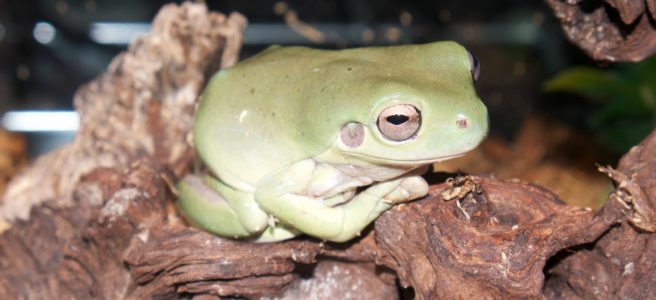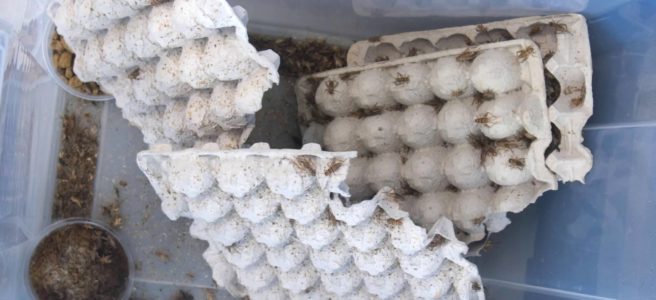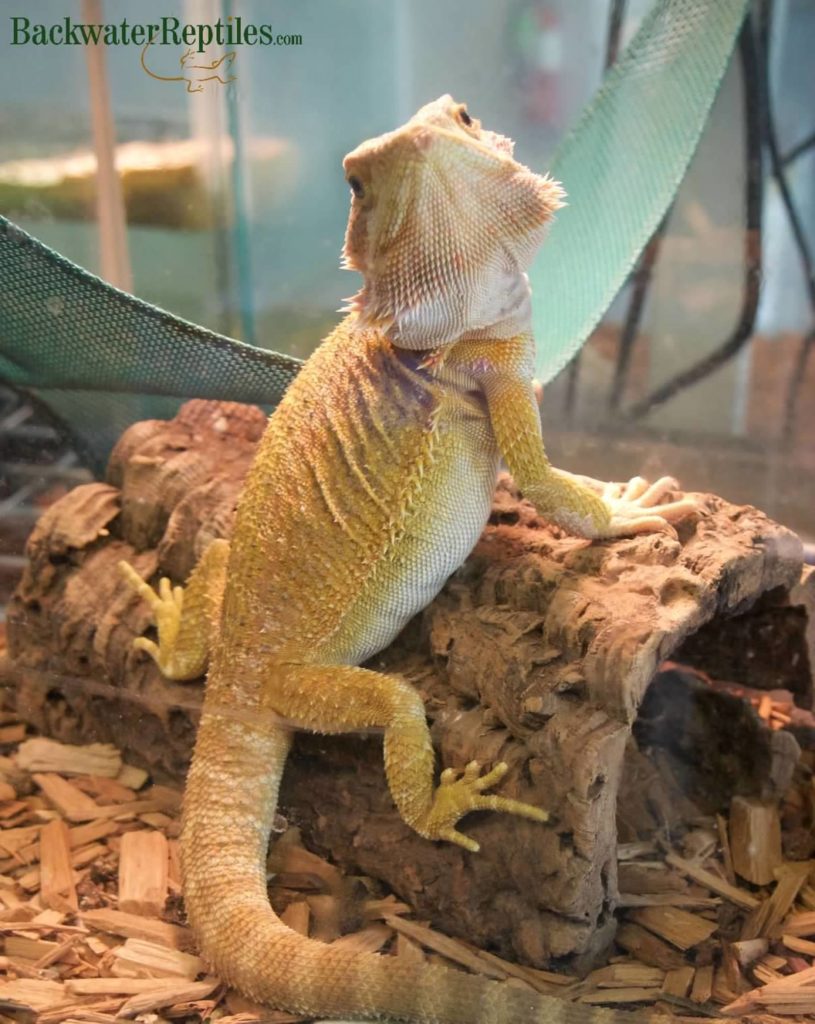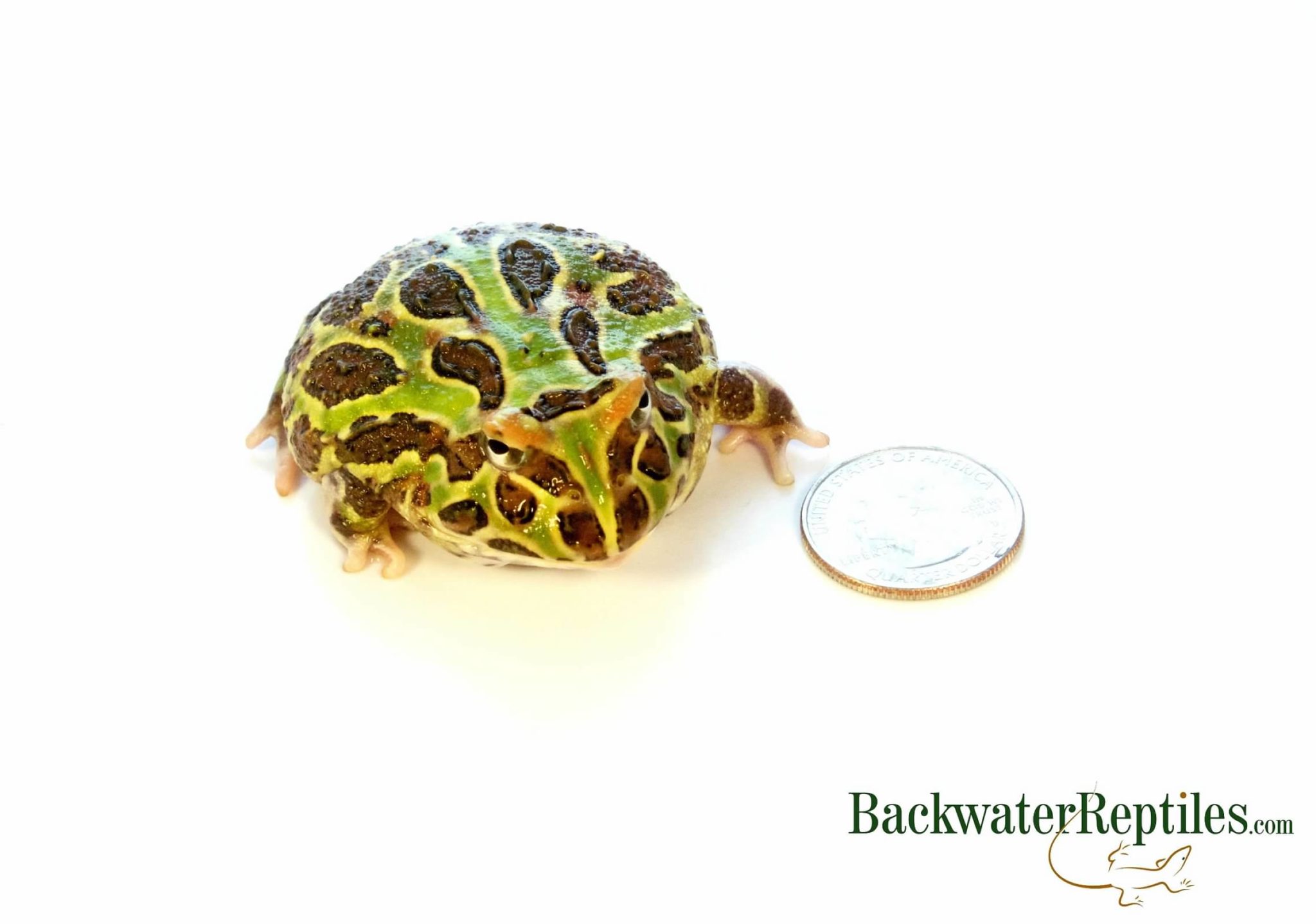Given that we’ve already written our article discussing the best pet terrestrial frogs, now’s the time for us to delve into the topic of the best pet tree frogs. Our picks for the best pet tree frogs are: White’s Tree Frogs, Red Eyed Tree Frogs and Clown Tree Frogs.
White’s Tree Frogs as Pets
White’s Tree Frogs (Litoria caerulea), also known as Dumpy Tree Frogs, are our top pick for the best pet tree frog. These frogs are simply one of the cutest tree frogs around and they have a lot of personality, at least as much as you’d expect a frog to have. They are also the largest and heftiest of the frogs on this list, maxing out at around four inches in length.
White’s Tree Frogs are typically green and sort of pudgy or squished in appearance, although they can be blue-ish in tone, which is called “blue phase.” They can also have little white speckles known as “snowflakes.” But no matter what coloration your frog is, it’s bound to be adorable.
Many of the funny videos of frogs missing prey or accidentally biting their owner’s fingers during feeding time are of Dumpy Tree Frogs. These are quite amusing frogs and their antics are sure to delight.

We like to recommend White’s Tree Frogs as pets because they actually live quite a long time for such a small creature. In captivity and with the proper care, they can live for 20 years!
Another positive trait that we like to point out about these frogs is that they are gregarious. This means that you can keep multiple frogs together without encountering adverse affects, provided that they are all around the same size. Just be sure to provide plenty of food, water and space and they will coexist together quite happily.
We also feel that White’s Tree Frogs are the best pet tree frog because they are very forgiving when it comes to their habitat. Like all amphibians, they are still sensitive to changes, cleanliness, temperature and humidity in their enclosure, however this species of tree frog is very hardy and durable.
You can handle White’s Tree Frogs, although we always advise handling amphibians with sensitive skin while wearing gloves. Dumpies are typically not shy around people and are not known for being skittish or jumpy while being held.
If you think you’d like to get a Dumpy Tree Frog of your own, Backwater Reptiles sells Blue Phase White’s Tree Frogs and Normal White’s Tree Frogs.
Red Eyed Tree Frogs as Pets
Red Eyed Tree Frogs (Agalychnis callidryas) are much smaller than White’s Tree Frogs, but what they might lack in size, they make up for in physical appearance. This is one striking species of tree frog! They are of course known for their trademark red eyes, but they also possess bright orange feet, vibrant green skin and bold blue and yellow/cream markings on their sides.

Although you can pick them up and hold them, most Red Eyed Tree Frogs are shy and reclusive. They will spend the majority of the time during the day hanging out in the tree branches with their eyes closed tightly in a sleeping position. They are most active at night, which makes sense because in the wild, those bright red eyes would be extremely visible to predators during the day. Overall, we recommend keeping the handling of your Red Eyed Tree Frog to a minimum.
This species of tree frog will get between two to two and half inches in length. The females are larger than the males at maturity which can help differentiate between the genders. They live on average about five years in captivity.
Like the White’s Tree Frog, Red Eyed Tree Frogs can be housed communally. We do advise making sure that there are abundant sources of water, plenty of food to go around and lots of space for each frog to feel at home in the enclosure.
Purchase your own stunning Red Eyed Tree Frog here from Backwater Reptiles.
Clown Tree Frogs as Pets
Clown Tree Frogs (Hyla leucophyllata) are one of the rarer tree frog species on this list. They aren’t as well-known or highly recognized as the other species on this list, but we still think they belong on the list of best pet tree frogs.
We adore Clown Tree Frogs because of the amazing colorations they possess. Their markings can vary widely based on where the frog’s genes originate, but they all have a darker brown/pink/reddish skin with cream or yellow colored patterns.

These tree frogs are known for their loud vocalizations at night, so be prepared for some froggy night music. They are also a bit more high maintenance in terms of their enclosure set ups than White’s Tree Frogs and Red Eyed Tree Frogs. If you are interested in a Clown Tree Frog, we advise starting out with an easier tree frog first to get the hang of amphibian habits and then moving onto the tricker, but equally rewarding, Clown Tree Frog.
Here’s a fun fact about Clown Tree Frogs: when the barometric pressure of the atmosphere changes due to an approaching storm, this species will tend to vocalize more!
If you are ready to own a Clown Tree Frog of your own, you can purchase one here.
Conclusion
Although there are many species of frogs that live on land or are mostly aquatic, this article focuses on the best pet tree frogs. We listed White’s Tree Frogs, Red Eyed Tree Frogs and Clown Tree Frogs as the species we view as the best pets.
Each of the frog species we discussed looks unique physically and many species can have different types of personalities. Some are more social, while others are secretive and would prefer to be display pets.
The tree frog species that makes the best pet for you or your family will ultimately be up to you and what your desires in a pet frog are.
What is your favorite species of tree frog? Do you think they make good pets? Tell us in the comments!













